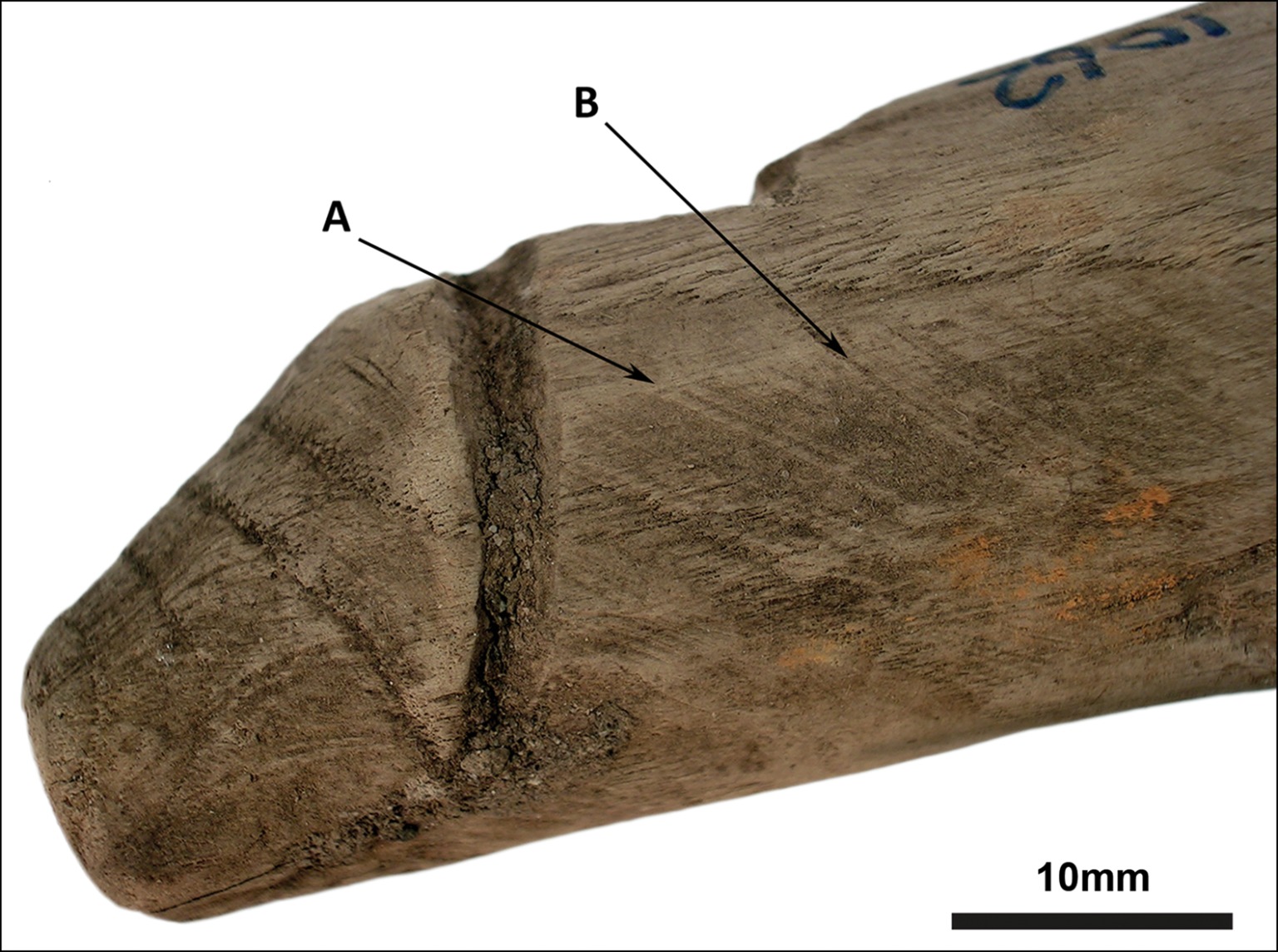Archaeologists have uncovered a potentially rare example of an ancient carved wooden sex toy found in a Roman fort known for a wealth of phallic motifs.
The ruins of the Vindolanda Fortress are located near Hadrian’s Wall in England on the frontiers of what was once the great Roman Empire.
On this politically tense frontier, where Roman soldiers faced the “barbarians” to the north, Icons depicting penises were a ubiquitous sign of protection. Images of male genitalia are seemingly found on almost everything; Stone walls, box lids, even riding gear.
But the wooden phallus mentioned above is unlike any other penis unearthed at the site. Or any other Roman dig for that matter.
The object was originally discovered in 1992 and rather innocently assumed to be a darning tool. But researchers are now pretty sure it is actually a disembodied penis.
Aside from a carved line at the tip that looks suspiciously like the glans of the appendix, the wooden object is fairly smooth, suggesting it had routine rubbing contact with another surface.
Archaeologists have proposed three possible explanations for what this surface might have been.
The 160-millimeter (6.3-inch) long tool could have been used as a grinding pestle specially designed to impart spiritual properties to foods, cosmetics, or medicines.
Although the tool appears capable of crushing soft materials, the lack of staining or discoloration on the object’s blunt end means there is no easy way to confirm this particular hypothesis.
It’s also possible that the wooden object was actually a penis, one that adorned a statue or was displayed outside of a building; a common feature in ancient Greece and Rome. Passers-by could then have rubbed the penis for good luck. Since there is no sign of outdoor weathering or removal or reinsertion in a grinding notch, it’s also an unlikely purpose.
The researchers’ third and final explanation is the most interesting: The ancient penis could be a uniquely preserved dildo from the second century AD.
“We know that the ancient Romans and Greeks used sexual devices – this object from Vindolanda could be an example.” says Archaeologist Rob Collins from Newcastle University in England.

Today we might be tempted to call it a sex toy, but archaeologists working on the artifact believe that term may not have been valid in Roman times.
“The use may not have been strictly sexual or for the user’s pleasure,” they said explain.
“Such devices may have been used in acts that maintained imbalances of power, for example between an enslaved person and their owner, as evidenced by the recurrence of sexual violence in Roman literature.”
The antique dildo may not even have been used for penetration. In fact, the wear marks on the outside of the object could better support clitoral stimulation.
researcher say The artifact shows “noticeably greater wear at both ends compared to its center”.
This seems consistent with signs of wear on one 2,000 year old bronze dildo found in China, although experts say it is difficult to compare patterns between such ancient artifacts.
Although the wooden phallus from ancient Rome “simple in shape‘ researchers suggest it was created by the hand of a confident artist, a practiced practitioner of penises, if you will.
In a Roman fortress like Vindolanda, that would have been quite an ability.
“The Vindolanda Phallus is an Extremely Rare Survival”, says Archaeologist Rob Sands from University College Dublin.
“It survived almost 2000 years to be recovered by the Vindolanda Trust…”
Interpreting the wooden phallus as a pestle or lucky charm may be less of a problem and uncomfortable for archaeologists argue we must “accept the presence of dildos and the manifestation of sexual practices in the material culture of the past.”
The oldest suspected dildo ever found in archaeology is 28,000 years old.
In all likelihood, these sexual instruments are part of human history, whether we acknowledge them or not.
The study was published in antiquity.





